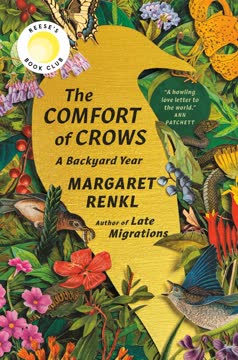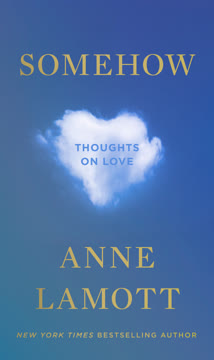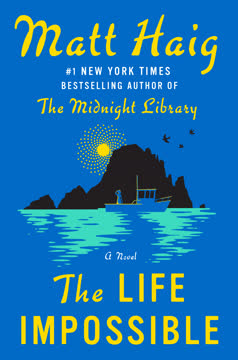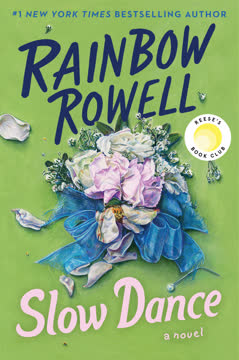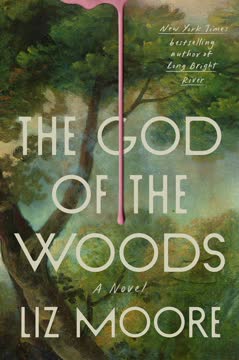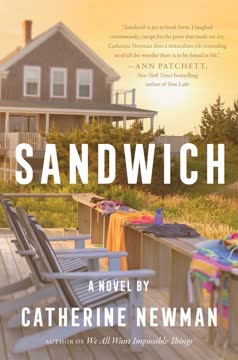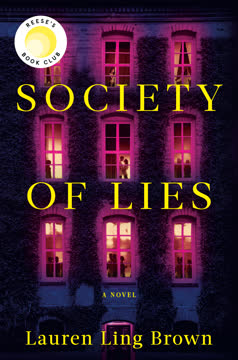Key Takeaways
1. The Imperative of Attention: Stop and Observe
To return and be welcomed, cleansed and redeemed, we are only obliged to look.
Conscious observation. The author implores readers to pause and truly see the intricate details of the natural world, from tangled rootlets and star-shaped sepals to chattering beech leaves and persimmon bark. This act of stopping and looking is presented not just as a pleasant pastime, but as a fundamental obligation for reconnecting with a world we've often turned away from. It's a call to rediscover the lavish garden that lies before us, however "hobbled by waste."
Unveiling hidden beauty. By slowing down, one can perceive the subtle contours of the earth, the distinct markings of small ground birds, and the hidden life within seemingly dormant winter landscapes. This deep attention reveals a world far richer and more complex than what is seen at a glance, transforming the mundane into the miraculous. Examples include:
- Identifying song sparrows from field sparrows.
- Noticing the intricate patterns of lichen on bark.
- Spotting a hummingbird nest smaller than a thumb.
Kinship through observation. The act of observing nature closely naturally leads to a contemplation of kinship, recognizing the shared biological structures between different species, like the bones in a turtle's webbed foot resembling those in a duck's. This deep connection fosters a sense of belonging and reminds us that we were never truly cast out of Eden, but merely chose to shut our eyes to it.
2. Nature's Interconnected Cycles of Life and Death
All endings are also beginnings.
Life from death. The book repeatedly illustrates how death is not an end but a crucial part of a continuous cycle, feeding new life. From dried petals dusting the forest floor to fallen leaves returning to earth, decay creates the conditions for future growth. This is evident in:
- Cold roots taking in water to fuel future budbursts.
- Fungi softening deadwood to create habitats.
- Knotholes in trees becoming natural greenhouses for seedlings.
Seasonal rhythms. Each season brings its own manifestations of this cycle, from winter's "season of sleeping" where life prepares to move, to summer's "teeming season" of fecundity, and fall's "season of making ready." These natural rhythms offer a profound lesson in acceptance and the inevitability of change, reminding us that even in the darkest times, renewal is inherent to existence.
Personal and universal. This natural truth mirrors human experience, where personal endings (children leaving home, parents passing) are also new beginnings. The author finds comfort in this universal pattern, understanding that even as individual lives conclude, the larger tapestry of life continues to weave itself, vibrant and persistent.
3. The Fragility of the Wild World and Human Impact
So much life is imperiled by what is merely fashionable: a green lawn, a tidy yard.
Human-induced vulnerability. The book starkly reveals how human actions, often driven by convenience or aesthetic preferences, directly imperil wildlife. The author highlights the devastating consequences of:
- Habitat destruction: Giant houses replacing wild lots, leading to loss of food sources for foxes.
- Pesticide use: Poisoned dandelions, moles, and mice creating a cascade effect, making predators like foxes vulnerable to mange.
- Non-native landscaping: Lawns and imported plants offering little habitat or food for native species.
Diminishing biodiversity. The author laments the visible decline of species, from the near-extinction of the American chestnut to the diminishing numbers of turtles, toads, bats, and lightning bugs in her own yard. This loss is not just a distant problem but a palpable reality, making her question the future of the natural world for subsequent generations.
Ethical responsibility. The choice between a manicured lawn and a biodiverse yard is presented as an ethical one, not just a matter of preference. The poisons used to maintain pristine lawns don't stay put; they contaminate the air, water, and even human bodies, linking our aesthetic choices to widespread ecological and health crises.
4. Finding Solace and Joy Amidst Turmoil
The natural world’s perfect indifference has always been the best cure for my own anxieties.
Nature as refuge. In times of political bewilderment, personal grief, and global despair, the author consistently turns to the natural world for solace. Immersing herself in her backyard, local parks, or a cabin in the woods provides a vital counterpoint to the "fretful human mutterings and naked human anger." It's a reminder that other truths exist beyond the chaos of human affairs.
Indifference as comfort. The natural world's "perfect indifference" to human concerns is paradoxically a source of comfort. Observing birds, mammals, and plants pursuing their own vital purposes places human anxieties in a larger, timeless context. This detachment allows for a temporary respite from the "dramas and worries and pain that are the warp of my life."
Unquenchable joy. Despite acknowledging the world's burning and the constant losses, the author refuses to quell the "leaping heart of joy" found in nature's beauty. Whether it's the "shivering joy of the coming springtime" or the "glad, galloping games" of children playing in autumn light, she asserts that "beauty and light will always be their own reward," and that humans are "creatures built for joy."
5. The Wisdom of "Benign Neglect" in Cultivating Nature
Year by year, the creatures who share this yard have been teaching me the value of an untidy garden.
Untidiness for life. The author advocates for a gardening philosophy of "benign neglect," allowing leaves to lie where they fall and dried stalks to remain. This seemingly haphazard approach is, in fact, a deliberate act of fostering biodiversity and providing crucial habitat for wildlife. Examples include:
- Leaves providing shelter for overwintering insects and ground foragers.
- Dried flower stems housing butterfly chrysalids and native bee queens.
- Brush piles offering refuge from predators and weather.
Beyond aesthetics. This approach challenges the conventional suburban ideal of a meticulously manicured lawn, which often prioritizes human aesthetics over ecological function. The author learns that an unkempt garden offers more than just food; it creates a complex, interconnected ecosystem that supports a multitude of creatures.
Learning from nature. The author's journey from "desultory gardener" to "acolyte of benign neglect" is a testament to nature's patient teaching. By observing the needs of birds, insects, and small animals, she understands that her "messy yard" is a vibrant, living space, far more valuable than a sterile, cultivated one.
6. Kinship and Empathy with All Living Things
For every living thing, there is a world that exists beyond my ken.
Shared existence. The author consistently highlights the profound interconnectedness between humans and other creatures, urging readers to recognize a deep "kinship." This extends beyond the conventionally "loved" animals to those often overlooked or feared, such as:
- The "absurd fleshy pinkness" of mole hands.
- The "lumbering, nearsighted, stumbling opossum."
- The "glossy vulture, soarer of air currents, eater of gore."
Beyond human understanding. Acknowledging that each creature experiences a world "beyond my ken" fosters humility and deepens empathy. Whether it's a dog's marvelous nose detecting unseen scents or a housefly's compound eye creating a mosaic world, the author marvels at the diverse ways life apprehends its surroundings, reminding us of our own sensory limitations.
Valuing the "unloved." The book challenges readers to extend love and gratitude even to creatures typically deemed irritating or dangerous, like mosquitoes, spiders, and wasps. By recognizing their roles in the ecosystem—feeding chimney swifts, providing silk for hummingbird nests, controlling caterpillars—the author argues that "no creature is made up only of poison, that no life is only a source of irritation or pain."
7. Embracing Change and Uncertainty as Life's Flow
I am learning that it is possible to want two contrary things at once. I want nothing to change. I want everything to change.
The paradox of change. The author grapples with the inherent tension of wanting things to remain the same while simultaneously desiring newness. This personal struggle—as children leave home, parents pass, and her own body ages—mirrors the larger environmental changes she observes, where predictable patterns are "upended."
Adaptability in nature. Nature itself provides lessons in adaptability. From the "flexible, adaptable, untraumatized by change" hummingbird preparing for migration to the "stubborn, undeterred" life that springs from suffering, the natural world demonstrates a constant process of adjustment and renewal. This resilience offers a model for navigating personal and global shifts.
Endings as beginnings. The recurring theme that "all endings are also beginnings" becomes a mantra for coping with uncertainty. Whether it's the transformation of tadpoles into toads, the "reverse nesting" of parents after children leave, or the cyclical return of seasons, the book emphasizes that life is an "unfolding" where new possibilities constantly emerge from what has passed.
8. The Power of Imagination and Perspective
What I imagine is happening in the minds of the creatures in my yard is merely that, an act of imagination.
Imagination as connection. While acknowledging the risk of anthropomorphizing, the author highlights imagination's crucial role in understanding and connecting with nature. It allows us to envision the unseen lives of creatures, from the "wild joy" of waking insects to the "unearthly scream" of a fox, fostering empathy and a deeper appreciation for their existence.
Beyond human perception. The book explores the limitations of human senses, contrasting them with the extraordinary perceptions of animals: a hawk seeing a mouse from afar, raccoons' sensitive hands, birds perceiving ultraviolet light, bats mapping the world with sound. This expanded perspective reveals a world far richer and more complex than we can directly experience, a "work of collage art" for a housefly.
Imagination for action. The author connects the failure of imagination to real-world consequences, citing a federal review that identified it as a chief reason for deadly wildfires. This suggests that imagination is not just for contemplation but is essential for predicting dangers, understanding complex systems, and inspiring action to protect the natural world.
9. The Importance of Rest and Renewal for Sustaining Ourselves
What if resting, all by itself, is the real act of holiness?
Rest as a sacred act. The author reflects on her great-grandmother's strict adherence to Sunday as a day of rest, contrasting it with modern life's perpetual busyness. She questions whether true holiness lies in the simple act of slowing down, sleeping, and breathing, especially when the world is in crisis and human exhaustion is rampant.
Recharging for engagement. Recognizing that "we can’t be of much use to it if we remain in a perpetual state of exhaustion and despair," the author seeks to reclaim rest not as a luxury but as a necessity. This personal renewal is crucial for maintaining the energy and hope needed to engage with the world's challenges.
Nature's rhythm of rest. The natural world provides a model for this essential rhythm: winter as a "season of sleeping," creatures burrowing into the ground, and trees going dormant. Even in the midst of activity, there are moments of stillness and preparation. The author learns to view her own sleepless nights as a form of "waiting," a state of passive readiness for whatever comes next.
Last updated:
Review Summary
The Comfort of Crows is a beautifully written and illustrated book that follows the changing seasons through observations of nature in the author's backyard. Readers appreciate Renkl's lyrical prose, environmental awareness, and ability to find joy in small moments. The book's 52 essays and accompanying artwork by the author's brother are praised for their beauty and insight. While most reviewers found the book comforting and thought-provoking, a few felt it was repetitive or overly melancholic. Overall, it's highly recommended for nature lovers and those seeking a meditative reading experience.
Similar Books
Download PDF
Download EPUB
.epub digital book format is ideal for reading ebooks on phones, tablets, and e-readers.
